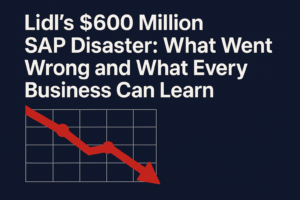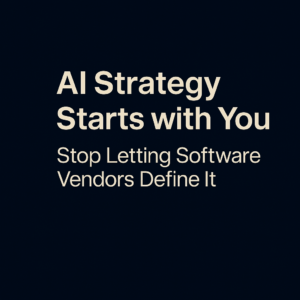When dealing with enterprise software vendors, many organizations find themselves caught in a cycle of forced upgrades, misleading promises, and vendor lock-in. If you feel like you’re being extorted by your software vendor, you probably are.
Software vendors have mastered the art of coercion—convincing businesses to make decisions that may not be in their best interest. While profit is a natural motive in any industry, there’s a fine line between legitimate business operations and practices that put customers at risk. In this blog, we’ll break down some of the most common ways software vendors exert control over their clients and how you can fight back.
Table of Contents
Toggle1. The Forced Upgrade Game
One of the most blatant ways software vendors exert pressure on customers is by forcing them into unnecessary system upgrades. Many organizations have spent years (or even decades) implementing complex software solutions, only to be told that they must upgrade to continue receiving support and maintenance.
What makes this particularly unethical is that customers are already paying hefty fees for ongoing support. The push to upgrade often has nothing to do with system improvements and everything to do with moving customers to the cloud—a transition that benefits the vendor more than the client.
While no software vendor can maintain an outdated system forever, many organizations are being given unreasonable timelines to migrate. The bottom line? Your upgrade schedule should be dictated by your business needs, not your vendor’s financial goals.
How to Push Back:
- Negotiate extended support contracts to buy yourself time.
- Assess your real business needs—if your current system is working fine, challenge the necessity of an upgrade.
- Explore third-party support options that may provide continued maintenance at a lower cost than upgrading.
2. Vendor Lock-In: Trapping You in Their Ecosystem
ERP vendors—especially the big players—are notorious for pushing an “all-in” approach. They want your entire business to run on their technology, even if it means forcing you to use modules that don’t actually serve your needs.
The problem with going all-in on a single vendor? Vendor lock-in. Once all your data, processes, and workflows are embedded within one system, switching becomes nearly impossible. It’s no longer just about software—it’s about your entire business being held hostage to a single provider.
Signs You’re in a Vendor Lock-In Trap:
- The vendor discourages third-party integrations.
- Contracts contain high exit fees or heavy penalties for leaving.
- The system is deeply embedded in mission-critical processes, making a switch disruptive.
How to Push Back:
- Diversify your tech stack by integrating best-of-breed solutions instead of relying on a single vendor.
- Negotiate flexible contracts that allow for future system changes.
- Maintain ownership of your data and ensure easy data migration capabilities.
3. Overpromising and Underdelivering
Software vendors are experts at selling a vision—one where their system is easy to implement, will revolutionize your business, and comes with minimal risk.
The reality?
- Implementation is almost always more expensive and takes longer than promised.
- The expected business transformation rarely happens without significant internal change management.
- Vendors downplay the true cost of ownership, leading to surprise expenses down the road.
Many businesses enter into ERP or software contracts with unrealistic expectations set by vendor sales teams. The result? Budget overruns, delayed implementations, and operational disruptions.
How to Push Back:
- Conduct independent research—don’t rely solely on vendor-provided case studies.
- Validate assumptions with third-party consulting firms that have no financial ties to software vendors.
- Budget at least 50% more time and money than what the vendor suggests—it’s almost always needed.
4. Customers Enable the Problem
As much as software vendors engage in coercive tactics, customers allow it to happen by blindly accepting vendor claims, signing unfavorable contracts, and failing to push back on unrealistic expectations.
At the end of the day, buyer beware. If a vendor’s promises seem too good to be true, they probably are. It’s up to customers to:
- Question vendor assumptions.
- Demand clarity in contracts.
- Take control of the implementation process.
How to Protect Your Business from Vendor Extortion
- Get a Second Opinion – Work with an independent technology consultant to review vendor claims and contracts.
- Validate Costs & Timelines – Always assume the real cost and time commitment is higher than what the vendor claims.
- Negotiate Like a Pro – Push back on unnecessary contract terms, maintenance fees, and forced upgrades.
- Find Unbiased References – Don’t rely solely on vendor-provided customer testimonials; seek out independent feedback.
- Own Your Data – Make sure you have full control over your data and the ability to migrate if needed.
Final Thoughts: Take Back Control
If you ever feel like your software vendor is forcing you into an unfavorable decision, trust your instincts—they probably are. But you don’t have to fall for it. By staying informed, negotiating smarter, and seeking independent guidance, you can prevent vendor coercion from derailing your business.
Want Expert Help?






